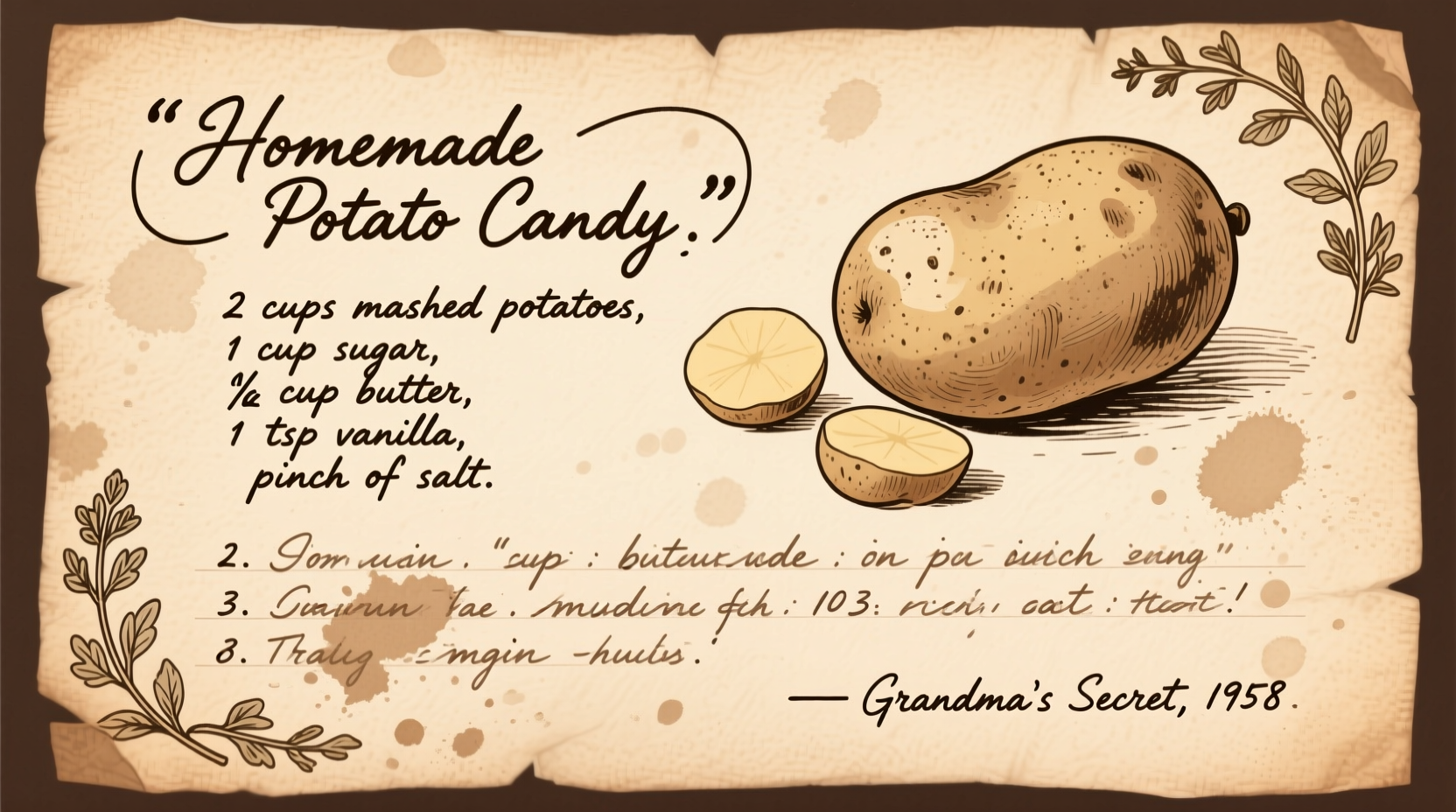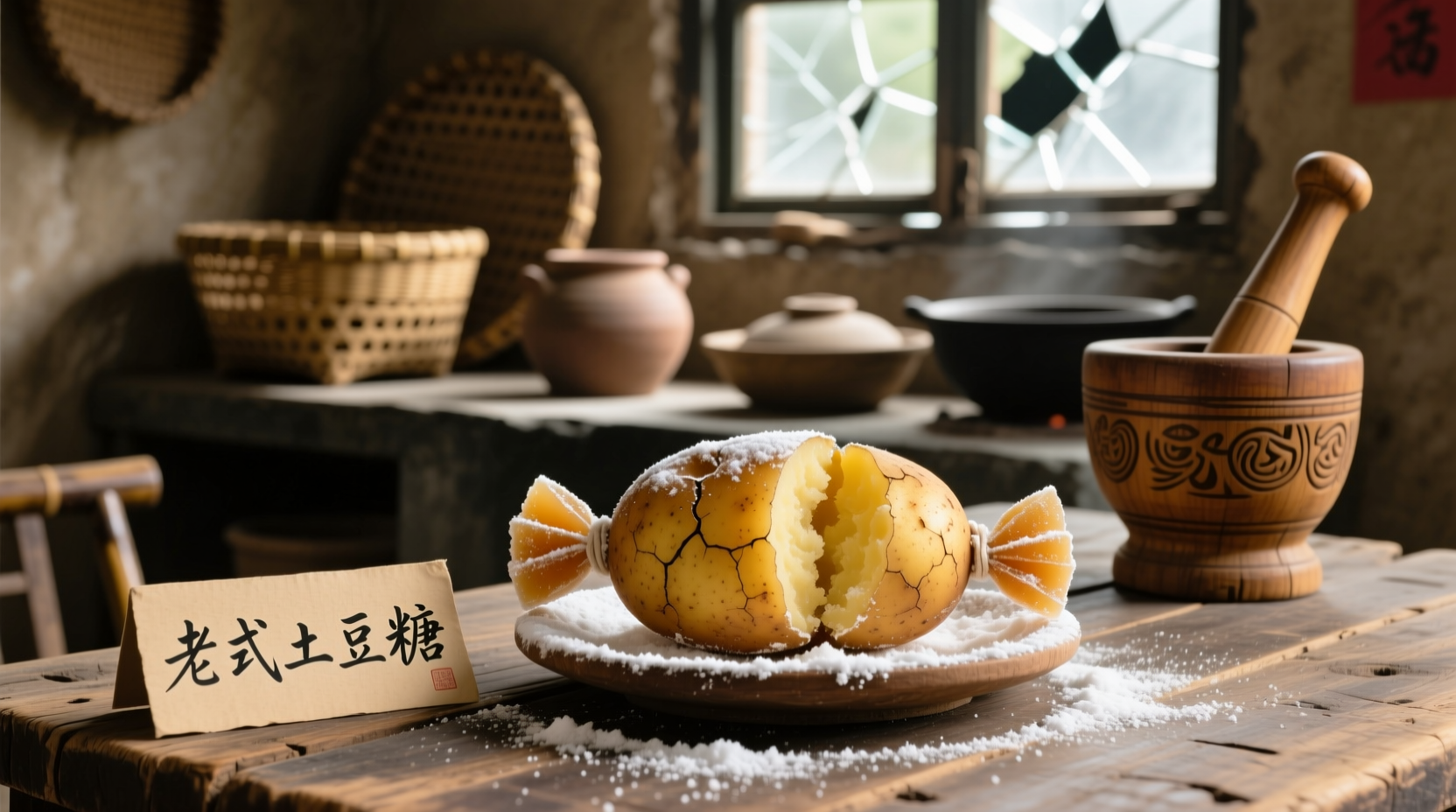The Surprising History Behind a Humble American Treat
When you hear "potato candy," the combination might seem unusual. Yet this simple confection represents a fascinating chapter in American culinary history where necessity sparked creativity. Understanding its origins reveals how ordinary people transformed basic pantry staples into comforting treats during challenging economic times.
From Scarcity to Sweet Innovation: The Historical Timeline
Unlike many candies with clear European origins, potato candy emerged from distinctly American circumstances. The timeline below shows how historical events shaped this unique confection:
| Time Period | Historical Context | Potato Candy Development |
|---|---|---|
| 1920s-1930s | Great Depression begins | Early adaptations using potatoes as sugar extenders appear in home cookbooks |
| 1942-1947 | WWII sugar rationing (limited to 12.6 lbs per person annually) | Recipe standardizes with mashed potatoes, minimal sugar, cocoa, and vanilla |
| 1945-1950s | Post-war ingredient availability improves | Recipe persists as nostalgic tradition, particularly in Northeastern communities |
| Present day | Food history revival movement | Recognized as "heritage candy" with regional variations documented by culinary historians |
According to the National Park Service's documentation of WWII home front efforts, sugar was strictly rationed at just 12.6 pounds per person annually during the war years. This severe limitation forced home cooks to develop creative alternatives to traditional candies.
Why Potatoes Made Perfect Sense in Historical Context
Modern consumers might question why potatoes became a candy ingredient, but the logic was sound given historical circumstances:
- Abundant and affordable - Potatoes grew well in Northeastern US climate and stored reliably through winter
- Texture transformer - When mashed, potatoes created a smooth, pliable base that mimicked expensive fondant
- Sugar extender - Potatoes allowed cooks to dramatically reduce expensive sugar while maintaining sweetness perception
- Preservation qualities - The potato base helped prevent crystallization common in low-sugar confections
Food historian Dr. Jan Longone, whose collection formed the basis of the University of Michigan's American Menu Collection, documented numerous Depression-era community cookbooks featuring potato-based sweets. These recipes represented practical solutions for families who needed to stretch limited resources while still providing children with occasional treats.

Regional Variations and Cultural Significance
Potato candy wasn't just a single recipe but evolved into distinct regional variations:
Northeastern Traditional - The most common version features mashed potatoes rolled in cocoa, sometimes with a hint of vanilla or cinnamon. Pennsylvania Dutch communities often added a touch of vinegar to enhance flavor complexity.
Midwestern Adaptation - In farming communities, cooks sometimes substituted sweet potatoes for white potatoes, creating a naturally sweeter confection that required even less added sugar.
Canadian Interpretation - In Eastern Canada, particularly Quebec and the Maritimes, French-Canadian cooks developed a version called "pommes sucrées" that incorporated maple syrup when available.
These variations weren't random but reflected local agricultural conditions and cultural traditions. The Library of Congress has documented how regional cookbooks from the 1930s-1940s show clear geographic patterns in potato candy recipes, with ingredient substitutions directly correlating to local crop availability.
From Survival Food to Nostalgic Treasure
As sugar became readily available again after WWII, potato candy could have disappeared. Instead, it transformed from a necessity into a cherished tradition:
- Post-war persistence - Many families continued making it as a nostalgic connection to difficult but unifying times
- Cultural transmission - Grandmothers taught grandchildren the recipe as both a cooking lesson and historical story
- Modern revival - Food historians and heritage cooking enthusiasts have documented and preserved regional variations
Today, potato candy appears in historical cooking demonstrations at places like Plimoth Patuxet Museums and Colonial Williamsburg, not as a survival food but as a meaningful artifact of American culinary resilience.
Why This History Matters for Modern Cooks
Understanding potato candy's origins offers valuable lessons beyond historical curiosity:
- Creative ingredient substitution - Learn techniques for adapting recipes when key ingredients are unavailable
- Food waste reduction - Discover how to transform basic staples into satisfying treats
- Cultural connection - Prepare heritage recipes that tell stories of American history
- Economic cooking - Master techniques for making delicious foods with limited resources
When you make potato candy today, you're participating in a tradition of culinary innovation that helped families maintain normalcy during challenging historical periods. The recipe represents more than just a sweet treat—it's a tangible connection to the resourcefulness of previous generations.
Frequently Asked Questions About Potato Candy Origins
Is potato candy actually made with potatoes? Yes, traditional potato candy uses cooked, mashed potatoes as the base ingredient, which provides texture and helps bind the minimal sugar and cocoa.
Why did people start using potatoes in candy historically? During the Great Depression and WWII sugar rationing, potatoes served as an affordable, readily available ingredient that could extend limited sugar supplies while creating a smooth, candy-like texture.
Where was potato candy most popular historically? Potato candy was most common in Northeastern United States, particularly in Pennsylvania, New York, and New England states, where potato farming was prevalent and sugar rationing hit hard during WWII.
Is potato candy related to any European candy traditions? While some European countries have potato-based desserts, American potato candy developed independently as a practical response to 20th century economic conditions rather than as an adaptation of Old World recipes.











 浙公网安备
33010002000092号
浙公网安备
33010002000092号 浙B2-20120091-4
浙B2-20120091-4